The Elder Scrolls Online – Then and Now [Interview]
Peter Donnell / 4 years ago
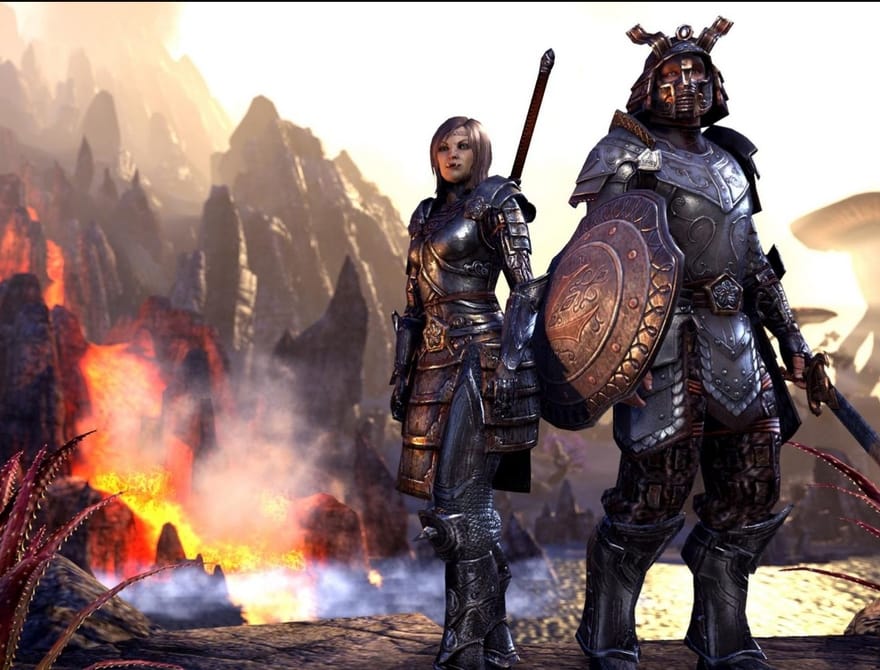
The Elder Scrolls Online has been with us for years now, and I’ve been along for the right since the start. Well, the second start, the initial launch wasn’t a smooth ride. However, since then the game has grown its user base and content year on year. Even last year, they saw an additional 3 million new players join the game! Now, we enter a new season of content for 2021 called Gates of Oblivion.
The year will start with the Flames of Ambition dungeon pack, launching on March 8th. This will be followed by the massive Blackwood zone on June 1st, and if previous years are anything to go by, Q3/Q4 will see a new DLC zone added to ESO later in the year. Not forgetting those sweet ESO gaming chairs coming later this year!
The Elder Scrolls Online
Following the recent reveal, which we covered here, and here! Community manager Nika Tufnell spoke with Zenimax Online’s Director, Matt Firor. I want to thank Bethesda for forwarding this on to me so we can share it with you all! It’s a long read, but with thirteen years experience creating this studio and this game, beginning around the time Oblivion was released, he’s got a lot to share! Get cosy, and let’s start the ride!
Nika Tufnell: Hello everyone and welcome to our post-announcement show. We are joined today by the Studio Director, Matt Firor. Hi Matt!
Matt Firor: Hi! Good to be here.
Nika Tufnell: Thank you so much for joining us today. What an exciting night it was for us last night …
Matt: Yeah, very cool. It’s always fun to talk about what are our plans for the upcoming year.
Nika: Yeah, and I always look forward to hearing about what a new year the Elder Scrolls Online will bring, so … it was great!
Matt: Yeah, I know. A couple of years ago we went to the ‘tell one big story over the whole year,’ so these January reveal events are really, really cool for us because we get to tell everyone what we’re doing for the whole year.
Nika: Yeah, and over the years there have been so many great moments as well. And, just to see how Elder Scrolls Online has evolved – it’s fantastic.
Matt: It’s great, yeah. It’s a big game and we really enjoy telling the stories, which is really what the year of content is about. So when we talk about The Gates of Oblivion, you know, we get to tell a really cool story over an entire year. So, it’s really cool for us to be able to have the time to tell stories like that.
The Gates of Oblivion
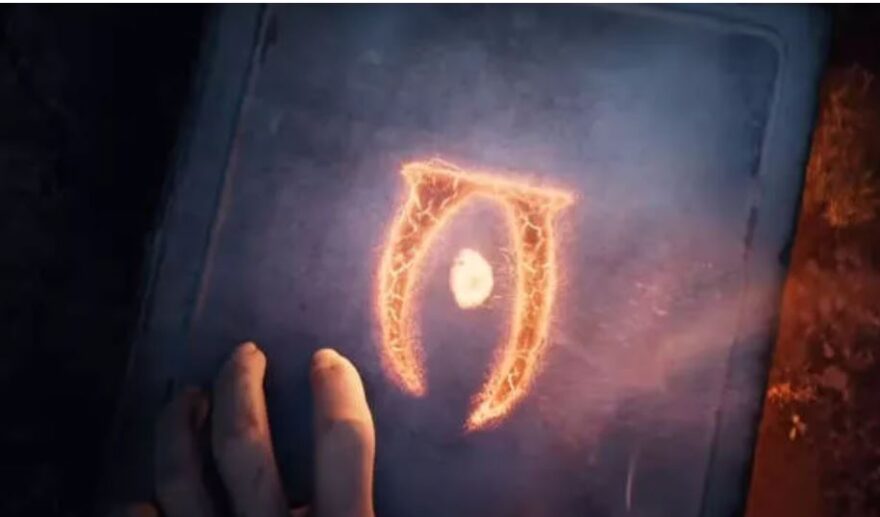
Nika: Yeah, and you’ve worked on Elder Scrolls Online for probably almost a decade now, developing it …
Matt: It’s more than that … thirteen years. Since 2007.
Nika: Obviously you developed this successful game that we all know now. What was there before Elder Scrolls Online for you; how did you get into the game development?
Matt: Well, first I’m old. So, I basically got into the game industry back when the industry was so small it was much easier to just do your own thing. So, I did a couple of little things in the mid 1980s but not for money, just more for school projects and things like that.
But, in the 1980s some friends and I were playing what you call a ‘multi-user game’ – this was before the internet – a multi-user game where you called in over modems, on phones, and ten people could play together. And we decided to license that game, because we liked it so much, mostly because we wanted to play it without paying for it. And, also, we were going to put it in Atlanta where a friend of mine was going to college.
So, that game was called Scepter of Goth, which was kind of an early M.U.D.. The funny thing was, we didn’t actually know what M.U.D.s were, we just knew we liked this game. So, we licensed it, we worked on our own kind of world for it, and then it never happened. The company, the big company that we licensed it from, went out of business. So we decided to just write our own. We were like, ‘We can do this! How hard can it be?’ So we wrote our own multi-user game using Coherent, which was an old version of Unix from the late 1980s, early 1990s. This is pre Linux too, that’s how long ago it was.
We wrote this game and we put it in our friend Rob’s house in Vienna, Virginia. We got twelve phone lines installed and twelve modems, and we set up this game – originally called Tempest. Then Microsoft didn’t like the idea that we’d named it Tempest because they had an arcade game called Tempest, so we renamed it to Darkness Falls and that game ran for a couple of years; enough for us to start a company.
That company grew into, by merging with another company, Mythic Entertainment. And then we made a whole bunch of little games which lots of people don’t remember, but our biggest one at Mythic, of course, was Dark Age of Camelot, and that’s how the road happened. From the 1980s to the late 90s and Camelot came out in 2001, we’re coming up on the twentieth year anniversary, and I worked there until 2006 or so and then I came over to Zenimax to start Zenimax Online and start working on ESO.
Nika: That is quite a journey.
Matt: It is. And the industry changed so much in those years. I mean, from literally four guys in a spare bedroom in someone’s house starting a company and being somewhat successful, to start a company and grow from there. You know, it was very hard to do then. It’s probably harder to do now. But it was great. We were always multi-user, we were always multi-player games, even when it was very hard to be a multi-player game company. But it was really, really cool to be there as the industry started and grew.
And so, the online game industry was founded by a very small number of people. So, I know them all because we’ve been in the industry together for so long. So, it’s pretty cool.
Nika: That’s cool. And then, of course, the time came for Elder Scrolls Online. Do you remember the initial pitch you made for it? What was the genesis of The Elder Scrolls Online?
Matt: Yeah, so Bethesda and Zenimax were looking for someone to start a studio around 2007 that had ‘MMO experience’ and multiplayer experience. They wanted to make Elder Scrolls Online. They wanted to take Elder Scrolls … Oblivion had just came out, it was very successful. Of course, there were lots of successful fantasy MMOs out there at the time and they wanted to build a multiplayer game based on the Elder Scrolls license.
So, the pitch I gave them … I mean they told me to make a multi-user game, MMO-based on Elder Scrolls. My original pitch was setting up the PVP alliances: this is the way the world is set up, so is the battleground – because it’s kind of in the middle. Oblivion had just come out and everyone was super familiar with it, so we wanted to turn it into a space that people PVP-d in. So, we didn’t have to go in and do a lot of quests and stuff, because players had just gone through it. And, of course, then Skyrim came four years later and changed everything. But, the initial pitch of the game was very much based on what Oblivion did, and then what other MMOs at the time were doing.
Nika: Yeah, and now it’s all great over the years.
Matt: It was interesting that our basis for understanding what Elder Scrolls was Morrowind, of course. But really Oblivion, and then the older games were very good for lore and background and world set-up. But, we were working on the game through 2010, 2011, and then Skyrim hit. Suddenly Elder Scrolls was twenty times more popular then it had been, and people’s idea of what an Elder Scrolls game was kind of changed, because now it was very much more Skyrim-centric and grittier and darker.
And so, we went back in and changed most everything about the game to make players that played Skyrim be more comfortable with the SO. We changed the art style to take down the colors, to make it darker, make it more realistic; changed the combat system from TAB-target MMO combat to mouse-swing combat like you do in Skyrim. We made a bunch of changes: fully-voiced NPCS, so when you talk to NPCs they were voiced. They weren’t that way before Skyrim. And then we launched in 2014 on PC.
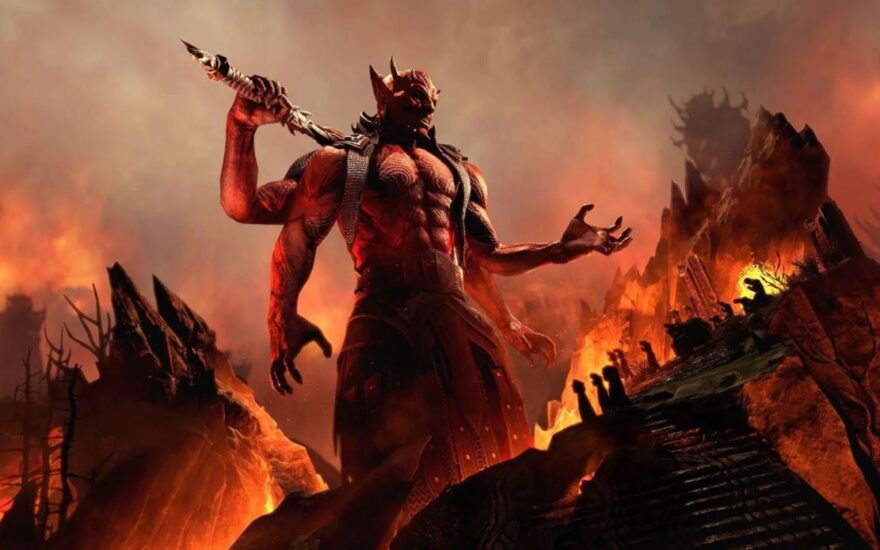
Nika: Yeah. And it actually leads to the question that I had about the audience that you had in mind, and if that fed into the content that you offered to begin with? You just covered that, but if there is anything else to add …?
Matt: I think the audience we were looking for was … I mean, we knew the Generation 2 MMOs like World of Warcraft and Everquest II and the Skyrim userbase. There was a lot of overlap between them, obviously: a lot of people that played Skyrim played WoW and the other games. A lot of people played MMOs also played Skyrim. So, we really wanted to make a game where both felt comfortable. Where you could put your hands on the controller, later with the console version, or with the mouse and keyboard, and be able to walk around the world and interact with it and feel comfortable. And then the game, of course, was different from Skyrim but … and different too from the other Gen. 2 MMOs, but close enough that they would get the idea. We knew we wouldn’t capture all the Skyrim players because some are a lot more casual and didn’t want to see other players walking around. But a lot of people that had experience with Dark Age of Camelot, World of Warcraft, Star Wars Galaxies and those games definitely wanted an Elder Scrolls world where you could interact with people and adventure with them. So that was what we were thinking about who would want to play the game.
Nika: Yeah, I mean you’ve captured it perfectly because I remember myself signing up to try the game for the first time and I was a bit mad that all my friends got their letter first and then I got my email. But, as you said, when I did log for the first time into the game and I tried it out, it was familiar for me to play in, and it was enjoyable because it was so familiar but still different, because it’s a different story – we’re telling a different story, a different time – but it was familiar enough for me to go, ‘okay I want to stay here for quite some time’. And that ended up years.
Matt: Actually, in the set-up of the game I should’ve said that five minutes ago … So, one of the issues that Todd Howard and I worked on very early, like the first couple of months of the project when I was actually working out of the Bethesda office in Rockville, was ‘when is the game? Is it after Oblivion, before Oblivion?’ So, we picked a time that was kind of unknown in the lore, it was The Time of Struggles, when there were a lot of emperors, a lot of kings, and it was perfect for what we wanted to do. So, it ended up being about seven hundred years before the other Elder Scrolls games. I think that gave us – like you said – it feels familiar. Seven hundred years in Tamriel is not that long, so cities would still be where they were. Architecture would be similar but we could tell different stories about what was happening and maybe make things look a little different so we weren’t exactly like Oblivion and Skyrim.
Nika: This is what I said about Markarth as well. You come there and obviously it’s ages before Skyrim but you see the familiar landmarks. You can navigate in space. I remember the map, even though I have not been to the Markarth map, to the Reach map, in Elder Scrolls online yet. And it was bizarre because I knew the land, I knew where to go, I knew where the cities were but they were different. They were having the flavor of The Reach to them. They had different structures, or some structures were missing. But that’s the beauty of it because we get to see back in the history of something we didn’t know, and you expanded on that history and gave us that history.
Matt: I think Markarth, which of course was in our latest DLC as part of the Greymoor year of content, Dark Heart of Skyrim. Markarth is interesting because it was actually built in a Dwemer ruin, you know, and the Dwemer of course disappeared from Tamriel thousands of years before anything that we know happened. There are some lore guidelines on that that you can see. But, of course it wouldn’t be different in the layout because they used the existing Dwemer ruin and made the city out of it.
That made it easier for us because we kept the structure the same but changed who was in control of it and kind of the dressing around it to make it look a little more primal because of the Reach men that were in control of it at the time, so … yeah that’s a great example of taking something familiar but going back in time and keeping some familiarity but telling new stories around it.
Nika: Obviously now you’ve got the idea, you’ve got the audience in mind. And then the time came to start working on content. How far ahead did you think in terms of evolution of Tamriel?
Matt: Well, for the launch version of the game, which is 2014, we were just trying to make the game for 2014. We did know that we wanted to make Imperial City, which ended up being the first DLC and was supposed to be part of the original game. And Orsinium was supposed to be our first DLC, but it ended up being the second because we just didn’t have time to get Imperial City done.
So we had those two, that we knew we had, and then we had lots of concepts. Fans love to point out that, in 2014, after PC launch at QuakeCon, we did a big presentation of ‘here’s what’s coming up for ESO’. We showed a lot of work that we did on Murkmire and other areas – Clockwork City, I think – and some of those didn’t come out for years after that presentation. So, we were thinking about what we were going to be doing, and fleshing out ideas for what they would look like. But it really took console launch and the game being hugely successful, and then Orsinium coming out in between and that being hugely successful, and then we kind of got the roadmap from there that players really liked Orsinium-size zones that became our Chapters. And then we could tell the smaller stories in DLC like Clockwork City, Dark Brotherhood, Thieves Guild, that kind of thing.
We had an idea of where we wanted to go but we really went in the direction that the fans showed us that they wanted us to go.
Nika: That’s great to hear that you took the input of the fans and made sure that their voices are heard. Because, as you said, Orsinium was absolutely fantastic in terms of DLC. It was the next level for me personally of Elder Scrolls Online storytelling, because by the time you’ve explored everything, you thought there: ‘Okay, what’s next?’ And then Orsinium came and just set up a whole new mood, and then it was like, ‘Okay, wow, I want more of this.’
Matt: Okay, yeah, and Orsinium was almost the watershed moment for the game because it had things in it that we didn’t realize until later would be the most important part of the game. And that is … we struggled for a long time when we were making Orsinium for what level to make it, because we knew it was better than a lot of our base content in the game. It’s really, really good; it’s still my favorite content in the game.
We didn’t want to force players to ‘Get to Level 50’, or Veteran rank which is what it was then, to be able to get into it. And we didn’t want to make it Level 20, because all the players that were already Level 50 wouldn’t want to play it – this is the MMO problem. So we decided to just make it Level agnostic. You could go in at any level and it scaled you to the content, and you could just play it, it didn’t matter.
When we did marketing for that, we didn’t even give Level requirements, we didn’t even say anything, and players just got in and started playing it and they didn’t realize the technology under the scenes was completely different than the rest of the game. And, we realized very quickly that Orsinium is great – it looks great, it plays great, the story’s amazing – but what players really liked about it is that they could play with their Guild mates who were different levels. It was the first time they were able to do that outside of PVP. It turned into Guild recruitment, like Guilds would say: ‘Come to Orsinium and we’ll walk you through, it doesn’t matter what level you are.’ And that, of course, became the basis for One Tamriel which came out a year or so later.
Nika: Yeah, I mean it worked perfectly. If you look at Morrowind as well, so many players that I know that have not considered Elder Scrolls Online before but that had a huge nostalgia growing up and playing Morrowind. They were like, ‘I want to experience playing Morrowind again. I want to go to the island. I want to see how it was before the story that I know. And they managed to onboard and start with the story as well, which was great to see.
Matt: Yeah, we have a one-word or two-word descriptions of each of our Chapters, or Years, so that everybody working on the game has a target, and the target word for Morrowind was ‘nostalgia’. We wanted to make it … you get off the boat in Seyda Neen. It looks like it. You talk to the registrar who’s actually the great-great-great-great grandfather of the registrar you meet in Morrowind. We did that on purpose. The height map from Elder Scrolls III was the height map for our version of Morrowind. We did it on purpose, we wanted players to feel like they were coming home, but give them a different story and a much more personal relationship with Vivec and so forth. It was a …. And have some fun with some of the mysteries that you find. If you’d played Elder Scrolls III you would understand, but if you didn’t it didn’t matter. We had a lot of fun with that.
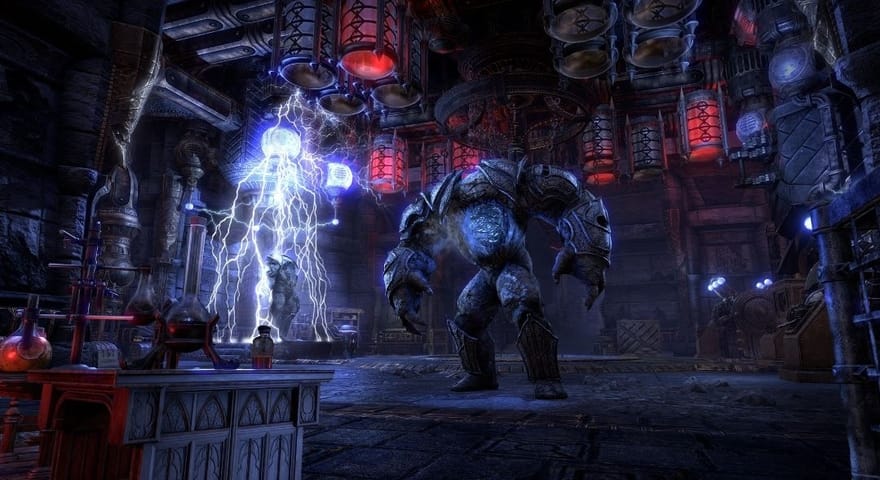
Nika: You said it feels like coming home, and I felt that. Because the first time I boarded off the ship in Seyda Neen I literally cried because I was like ‘I can’t believe this is happening: the music is playing, I’m on the boat, the registrar is talking to me … this is the best day of my life!’
Matt: And you could just go in any direction, just like Elder Scrolls III, you didn’t have to talk to the registrar, you could just go off and go wherever you wanted and that’s the key to this kind of game.
Nika: It’s fantastic. When it comes to Chapters, as we’re talking about the Chapters, what is it like deciding on revisiting or introducing new areas?
Matt: Yeah, that’s a good question. So, some are obvious. We knew we didn’t have enough ‘Morrowind’ content in the game because we only had two zones, I think. So, when we did that year that was Morrowind, and then I think it ended with Clockwork City, that made a really good set of content for players that wanted to go back to Morrowind. Because the Morrowind we had before the Chapter Morrowind was not really the same area that players were used to and it was different.
So, we liked doing that when we did the base game because it was different and then we gave them the nostalgic one. And then we just look at areas of the map Summerset was obvious because we had Auridon in the base game, but players had really never gone to the homeland of the Altmer, so that was obvious. And then Elsweyr was obvious. Skyrim – western Skyrim – was because we didn’t want, in the base game, to go all in on Skyrim because players had just played through it. But with Dark Heart of Skyrim, last year in 2020, that was nine years after Skyrim. Elder Scrolls V launched. So we thought that enough time had passed and we could start telling some Skyrim stories again. And then, as you know from the Gates of Oblivion, we picked Blackwood which is this area which half the players remember from Oblivion but then it has a whole area which players have never been to before, which is western Black Marsh in the city of Gideon. It’s a good example of … players hadn’t been there in a while, to part of it, but there’s a whole new area which is brand new which they haven’t been to. We look at the map, look for fun areas that tell great stories.
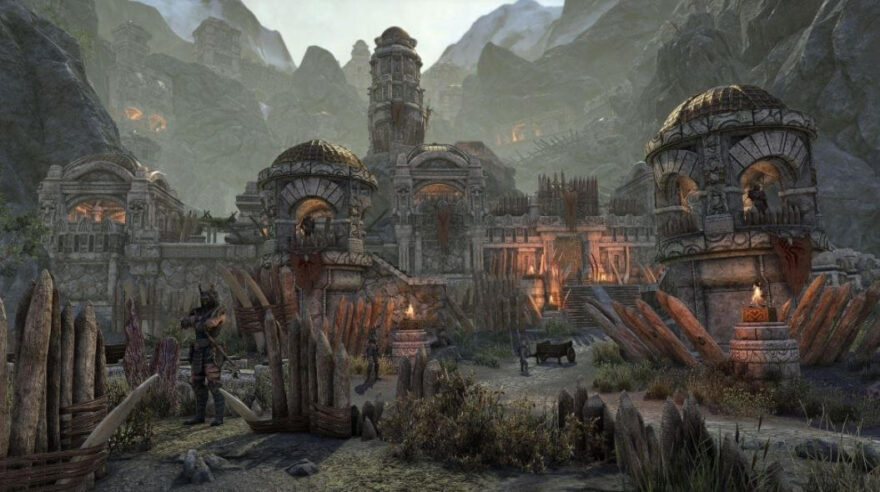
Nika: It sounds like the fan expectation is also being considered as a factor in this. We’ve travelled to so many different places; places that we’ve visited before, the familiar ones. And the new ones that were absolutely exciting to step in because you’ve never seen them before in any other games. And we’ve met new characters, we’ve made friends, made many memories. What is your personal happiest moment of the last eight, nine, ten years?
Matt: There’s one above all the others, and that is the day we turned on the game for live users. April 4th, 2014 is our official date but we actually had early access which started a week before earlier. The end of March, I think it was the 28th, someone listening to this will of course tell me on the internet what exact date it was – they all seem to run together back then because we were all working very hard. But that day I actually used the ‘sit chair’ emote in the middle of Daggerfall and just watched as players poured in from the Tutorial zones. It was … it’s unbelievable as a games developer to see that because we had been playing that game for years at that point and it was mostly empty, except in some of our Betas. But to actually see it happen live with real people who were all dressed up in their Soul Shriven outfits, because they didn’t have any armor, and to just see them run all over the city and taking quests, there is no feeling like that. As a games developer that’s the best feeling you can get.
Nika: For the player as well, stepping into the world for the first time that it’s just been opened to you, I remember feeling … not entirely lost, but being ‘Oh, there’s so much to explore. I can do emotes.’ I remember typing out all the emotes that I could find and just being absolutely mind-blown that my character can do so much. And being torn over what I wanted to do first, where I want to see because there are zones that I haven’t seen and I wanted to know their stories as well.
It was definitely very exciting to step into the stories of Elder Scrolls Online, especially for fans who really wanted to experience the game, together with their friends. And being able to say, ‘Have you seen this?’ with your friends, and friends going, ‘Yes, this just happened.’
Following the highs, what was, you would you say, the low points?
Matt: It’s a great question. If you step back and look at it, I make virtual worlds for a living and it’s all good but there have been some stressful moments.
One of them, that’s interesting, is that early on one of the design guidelines that we followed for the game was we want the players to be able to change the world. Because you could not do that in any other MMOs at the time. But you could in Skyrim, you know your actions had consequences and the world changed because of it, a little bit.
So we had many, many quests and POIs in the game where I started and the POI, let’s say a town, is in one state and when I’m done it’s in another state. Like, it’s on fire when I start and I help it and put I it out and it’s not on fire anymore. It’s dangerous when I start, and it’s not dangerous when I end. And you’re thinking, ‘Wow, that’s great. It’s an Elder Scrolls game, of course you could do that.’ But, the problem was that the way you do that technically behind the scenes is you have two different versions of that town: one that’s in the first state, and one that’s in the second state. Once you complete the quest it changes states for you, so you see the changed version. The problem is, if you’re adventuring with someone and they haven’t done the quest and you walk into the town, you get separated and they are on the dangerous layer and you’re on the happy layer. And suddenly you don’t see them anymore. So, if you think back to 2014 and players complaining about player separation, it was because we designed it to do that so that you as a player could see the results of your actions. But, obviously, if I played the game for two weeks and then I tell my friend to come join me and then my friend starts, my friend is going to see a different world than I see because I’m ahead of them. And I won’t be able to help them in those quests where we disappear from one another.
So, we very quickly realized that was a bad decision and it took us almost a year to go in and change all of the areas of the world where we had it. And there’s still some, we just couldn’t get them all. We minimized the impact of that, but it was a lot of work to change that.
If you look at Bleakrock Village in the Ebonheart Pack starting area, that I think still has the state change where the Covenant is attacking in one layer but it’s not attacking in another layer and you still get separated. So there are still some. But that was in a beginner zone, and we didn’t feel like a lot of high level players would be going back to adventure there, so hopefully the impact isn’t quite so bad.
For everyone listening and watching this, that is what happened when you were adventuring in 2014 and early 2015 and then the person you were adventuring with suddenly disappeared but you could see their icon hovering over their head but not actually see them. That’s what was going on.
Nika: Mystery unveiled!
Matt: Exactly!
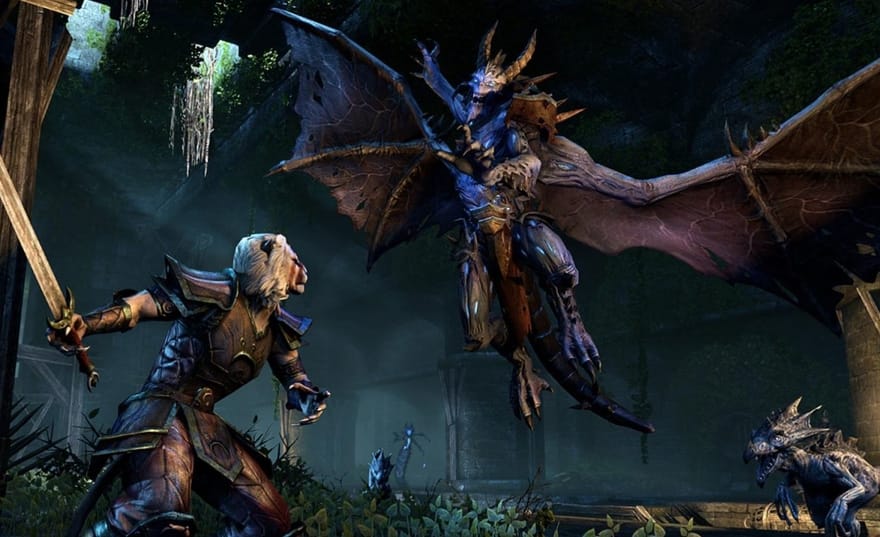
Nika: Elder Scrolls Online now has a global base of 15 million users …
Matt: Almost 18 now …
Nika: Wow! That grew really fast!
Matt: Yes, we had over three million people start in the last year.
Nika: Oh wow, that is awesome! What do you think were the key learnings that have contributed to its success?
Matt: Well, I think much of the conversation we’ve had covers some of that. We changed the game so that it wasn’t level based, so because of the Orsinium story. That was One Tamriel which came out in 2016, where we auto-levelled the entire game so you could play with whoever you wanted when you wanted.
That was the single biggest decision that we made that had the biggest impact on people playing the game. Because, suddenly with that you could recruit your friends to come in and play with you, and it didn’t matter that you had already been playing for two years. You could just, from the moment you started, you could adventure together. Player separation was taken care of and the level gap problem was taken care of. I think that was the biggest decision, we made it more social. Obviously it’s not a ‘standard’ MMO anymore because of that, but it’s like much more like a standard online game. Like, Grand Theft Auto – do you really worry about what level you are in Grand Theft Auto? No. You just jump in and play. And that was the point: just let them jump in and play. Let them do whatever they want. Don’t separate them. Don’t worry so much about levels. Levels are now personal; it’s now your character and how you build out your character, what levels are for. But they’re not going to gate any content in the game. So, that was the decision that we made and that led to a huge player growth explosion in 2016 and 2017. Then of course Morrowind came out and people wanted to play that. And last year, of course, the Dark Heart of Skyrim content, people wanted to see a little more Skyrim so we added a lot of users and had a lot of people playing. More than at any time since 2015’s console launch. We had a big, big year last year.
Nika: As you’ve said, I feel like being able to do whatever you want at any level, just go out there and explore, it’s truly in the heart of Elder Scrolls. Because that’s what you do: you just go and explore the story on your own. So, it feels natural to be the same way in Elder Scrolls Online as well.
Matt: Yep.
Nika: And, of course the team that is working on the game is also huge because the game is quite big. What do you look for when you are looking to recruit new members for the development team?
Matt: I think it depends what it is you’re looking for. Obviously, engineers – we have a giant infrastructure for the game so we look for very specialized people that have massive online game experience and so forth. But we also have gameplay engineers that are more focused on just normal videogame development. Artists, we very much look for people that are experienced with the art style that we’re looking for and the animation style that we have, and experience. But really we just want quality people that want to be part of the team, that have some experience where it’s necessary or if it’s an entry-level position we feel we can work with them and get them integrated into the team.
We look at a lot of different places. We have employees and contractors working in many countries on ESO. Of course, we have a couple of satellite studios in the US, and then we have our big main studio in Hunt Valley, Maryland. It’s a big team, but we’re always looking for quality people. This year we’re actually expanding the team. I talked a little bit about this in the event. We’re embarking on kind of a ‘Get more stable and make sure that it runs more smoothly,’ even as we keep adding all of this content. So, we’re actually hiring people and expanding the team to be able to accomplish that. That’s a big push that we have right now. That very much in looking for engineers to go take some tech debt off the backlog and fix problems and make sure that we don’t introduce new ones when we fix them. That’s very much what we’re looking for right now.
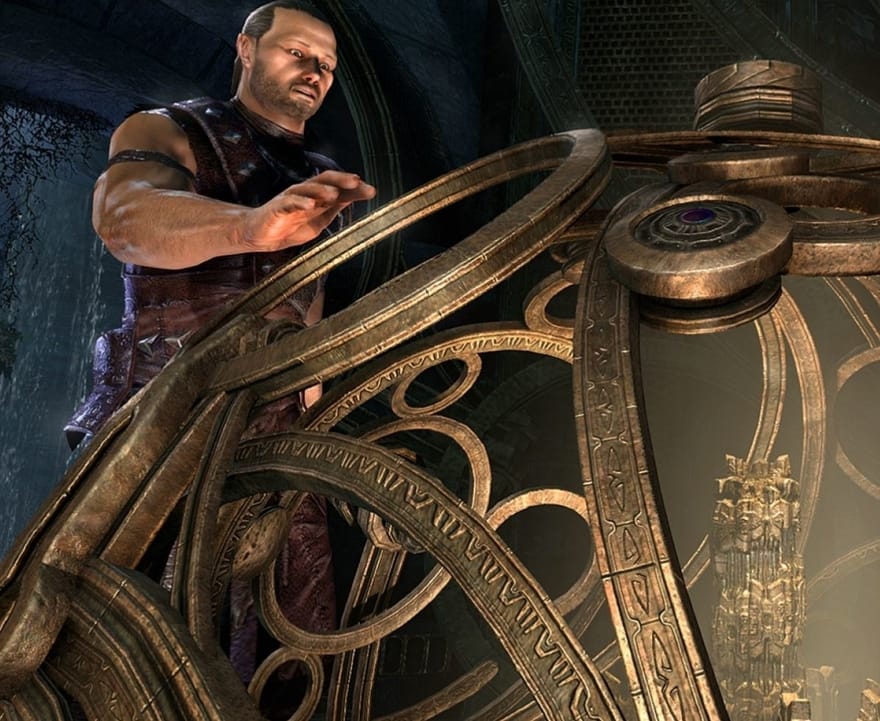
Nika: That’s awesome. From everything that we have seen last night that you mentioned, what are you most excited about in the new chapter?
Matt: That is a great question. So, I did say that Orsinium is my favorite Chapter-size piece of content. Very close second is Murkmire. I loved Murkmire. It’s not just because Argonians are awesome but it’s a really different feeling part of Tamriel than any other part of Tamriel. So, I’m really excited to go to the parts of Black Marsh that are in the Blackwood Chapter. Like Gideon.
For listeners and viewers who aren’t so familiar with Elder Scrolls lore, that part of the world is actually a giant battleground between, oh for centuries, between the Imperials trying to take over Black Marsh and the Argonians trying to fight them back. It’s an interesting cultural melting pot where there’s these really old things that are Argonian-related and then there’s a lot of Imperial things. Imperials in ESO generally have been kind of evil Daedra-worshipers, because that’s what they were in this time in history.
But this gives us a chance to go into some other aspects of Imperial lore as well, and kind of piggy-back off the Oblivion stories and the things that went on there. And obviously Mehrunes Dagon is a great adversary, we remember him as stomping through the Imperial City at the end of Elder Scrolls IV. You get to spend some time with him and go to the Deadlands, and that’s really cool.
Nika: Oh, it’s going to be exciting to see him once again. I’ve just recently been replaying Oblivion, so … it’s a bit spooky to see him again! Now that this Chapter is defined, how far ahead, in your head, you are in the Elder Scrolls story?
Matt: A couple of years. I’m looking at pitches now for the next two years. We kind of know the direction we want to go next year, but maybe not where yet. We have some story ideas. And then, the year after that, we have some ideas. So, we’re always looking ahead.
Of course we already working on … you know, the team that is working on Blackwood is almost done. It’s almost ready for testing, it launches in five months or so. There’s no rest here. We’re already working on ideas for 2022, and that will start production later this year.
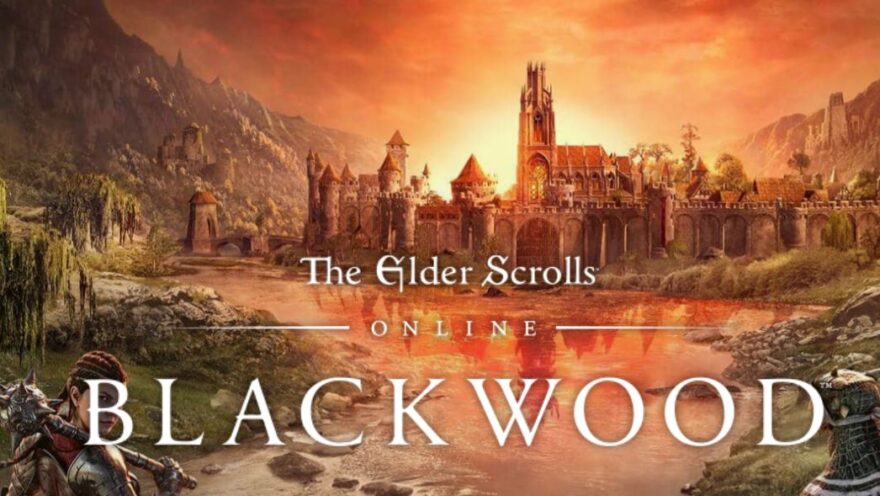
Nika: Awesome. There’s so much to look forward to. After all of these efforts that went into Elder Scrolls Online, from starting it up, then changing things that you’ve said were quite difficult to change but were very important to the overall success of The Elder Scrolls Online. What does Elder Scrolls Online mean to you personally?
Matt: Well, it’s been obviously a huge part of my life since 2007. And it’s funny that, since 2000, almost 21 years, I’ve only shipped two games. Dark Age of Camelot and now Elder Scrolls Online. These kinds of games, for the developers, is a relationship. I know you have to keep on top of it, you have to make sure you know what’s going on. The team is always very large that works on these kinds of games.
But, I’ll say for me personally: It really is a virtual world that I want to live in. Like, I think last year obviously in 2020 with Covid and everything we saw a huge spike in players using our housing system. You know, to go in and literally make their own kind of hide-away from the real world in their favorite virtual world. That is my favorite part of making games like this, just making places where people can go that they feel safe and have fun. To communicate with people that maybe live a long way away, like family members spread all over the country and sometimes the world can get together in Tamriel and have dinner in their house. And people do this. This happens.
So, the feeling that I’m able to provide that kind of service to people that use it not just as a game but kind of as a way to go somewhere where they’re happy and things make more sense sometimes, I think is a real, real, real serious thing for me.
Nika: It’s wonderful. It’s wonderful to know that, and know that this is a thing.
Matt: Oh, absolutely.
Nika: I think it’s a wonderful note to end up today’s …. I can’t imagine it getting any better than this beautiful speech right now. Once again, thank you so much for joining us for this interview.
Matt: My pleasure. I love to talk about this, so … we’re really excited about the year coming up. Very much so. Can’t wait for players to jump in and experience it.
Nika: Awesome. Well, thank you so much. And we’ll see you sometime soon again.
Matt: Thank you.
Nika: Bye-bye everyone.



















